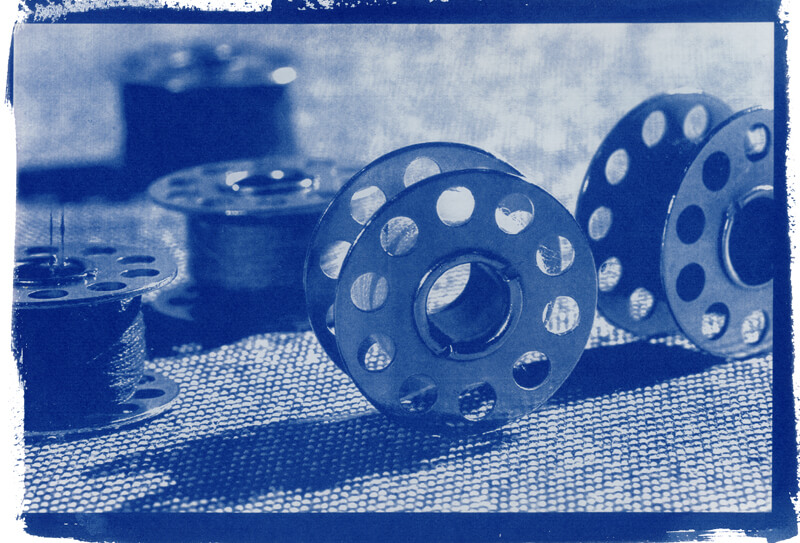Early success prompts valuable research
JMat opened its doors as an assayer and mineralogist, responsible for testing the purity of precious metals1. The value of gold was assessed by applying chemical tests to ascertain the exact quantity of gold in a sample. JMat rapidly gained prominence in the London bullion market by offering to buy back the gold that had been tested – becoming the official assayer and refiner to the Bank of England.
In the 1850s, it launched a unique initiative (later called the Johnson Matthey Loan Scheme), whereby compounds of precious metals were given to researchers free of charge so that the properties could be investigated and applications identified. Sir Geoffrey Wilkinson’s2 comprehensive findings on synthesis and homogenous catalysis by precious metals, which would not have been possible without this scheme, greatly aided the development of JMat’s catalysis business. Over the next century, the company continued to build on its successes by expanding into North America and Asia.
Following the passing of the Clean Air Acts of 1956, 1968 and 1970, JMat produced the first emission control catalyst, enabling automobile manufacturing companies to significantly cut exhaust emissions. This technology formed the basis of their extensive innovation over the next few decades. The present product line ranges from vehicle catalysts to hydrogen fuel cells. They also provide services such as precious metal refining and recycling.
1Gold, silver, platinum and palladium specifically.
2English chemist and Nobel Prize laureate who pioneered inorganic chemistry and homogeneous catalysis.
JMat’s current business
Europe, the Middle East and Africa constitute the bulk of JMat’s business, contributing 49% of sales in the 2022 financial year. Asia Pacific (including China) and the Americas contributed 30% and 21% of sales respectively. The company focuses on three core categories (charted below) that are synergistic, sharing common customers, technology capabilities and a platinum group metals (PGM) ecosystem that enables reliable supply and circularity.
- The clean air division produces catalysts for emission control to remove harmful emissions from vehicles and non-road equipment powered by diesel and gasoline.
- The natural resources division provides products and processing services for the efficient use and transformation of critical natural resources including oil, gas, biomass and PGMs to enable the decarbonisation of chemical value chains and provide circular economy solutions (recycling).
- Other markets is a portfolio of businesses (battery systems, hydrogen fuel cells, diagnostic services and green hydrogen) focused on potential future growth areas and value realisation opportunities.

Catalysing on the zero emissions movement
In the 1950s, scientists at JMat identified that PGM catalytic technology could reduce emissions from combustion and related processes. The company has pioneered technological innovation in this regard for over 60 years, being the market leader in the manufacture and supply of catalytic components that reduce emissions from engines, boilers and industrial processes. JMat produces catalysts predominantly for the automobile market (autocat) alongside Umicore and BASF, the other largest players. While JMat commands the number one market share (65%) position in diesel-related autocats, it lags in gasoline catalysts due to its lower historic investment focus in this area.
As indicated below, the clean air market segment is characterised by the high research and development (R&D) spend that is required to continue to meet changing global emissions regulations.
Automobile sales are currently the largest demand source and, with vehicle demand expected to grow in the next few years and the continuing tightening of emissions standards, sizeable expansion is expected. However, given that this will entail high complexity growth, JMat will need to increase capital investment to remain competitive. The business is well positioned to benefit from this, with strong structural demand and limited competition.

Key differentiators
JMat is the world’s largest refiner and recycler of secondary PGMs – around twice the size of their closest competitor. These PGM services provide the flexible metal sourcing and price risk management required to run the rest of the company. Around 80% of the PGMs that are used in their products are refined within the group. This integration provides many advantages, including superior insights into PGM market supply and demand dynamics.
JMat’s catalyst technologies supply directly into the chemical and energy sectors. The business model is based on three key revenue streams: licensing3, first-fill and refill catalysts. The outlook for first-fills is strengthening as customers become more carbon sensitive. JMat’s intention is to increase the contribution of the licensing component in the medium term as this business has higher profit margins and lower capital requirements.
Another key contributor to growth is JMat’s newly developed sustainable solutions business that has opened the door to the energy sector (far larger than the chemicals sector). The recent licensing wins in this market demonstrate the growth potential of the segment as customers move towards more sustainable sources of fuels.
3JMat provides a flow sheet of how the plant should work to make it more efficient and show where catalysts need to be positioned.
Fuel of the future
Hydrogen fuel cells convert chemical energy into electrical energy by transforming hydrogen gas and oxygen into electricity and water, with no carbon emissions (left chart below). Central to the technology is the catalyst coated membrane4 (CCM), a single component that determines the efficiency of the entire application. Hydrogen fuel cells can be used in a wide range of applications including transportation, materials handling and portable and emergency backup power production and storage.
The increased production of fuel cell electric vehicles (FCEV), in particular heavy-duty vehicles, represents the key growth opportunity for this division. The long-haul journeys undertaken by heavy-duty vehicles and their hefty loads, make fuel cells the more practical solution relative to battery electric equivalent vehicles. FCEVs have longer ranges and the fuel cells take up less space and are far lighter than battery-driven solutions – key considerations for transport applications.
FCEVs are an integral part of a low carbon future and many global automotive companies have invested extensively to bring these vehicles to market. With more than 20 years’ experience in this area and the resulting extensive intellectual property, JMat is the leading global fuel cell provider and therefore favourably positioned to benefit from this opportunity into the future.

4Like an A4 piece of paper that gets printed with “ink” on both sides. The “ink” contains catalysts based on PGM chemistry. Placing these “inked” sheets of paper together creates a fuel cell stack.
Green hydrogen is gold
Green hydrogen is produced through electrolysis (above right) by splitting water into hydrogen and oxygen using renewable energy. This is essentially the reverse chemical process of that used in a FCEV to produce electricity. However, the high energy costs from renewable sources (essential for making the electrolysis green) make it expensive to produce. The World Hydrogen Council has predicted that hydrogen production costs will fall by 30% come 2030 due to the declining cost of renewable energy and the scaling-up of hydrogen production.
As noted by the International Energy Agency, the global demand for hydrogen as a fuel source has tripled since 1975, reaching 70 million tonnes a year by 2018. In addition to serving as a successor to certain internal combustion engine transport applications, hydrogen is now valued as critical to balancing out energy sources for the future. The technology is likely to be used as a storage-based solution to the supply fluctuations of renewable energy.
Decarbonisation will springboard an increased focus on the production of hydrogen, tying in with JMat’s strategic focus on hydrogen technology as a sustainable energy source and the development of their green hydrogen capabilities.
Catalysts for future growth
JMat has invested substantially in expanding their capabilities in supplying the producers of green hydrogen. The ability to meet emissions legislation will be based on the technical capability of suppliers and JMat stands out as a leader in this regard, with their extensive experience in catalysis and decades of R&D. This, coupled with industry leading market shares (resulting in strong competitive advantages) and material capital expenditure in autocatalysis, should manifest in increased returns on a higher capital base as utilisation is optimised. In the long term, substantial value will be delivered to JMat shareholders.




